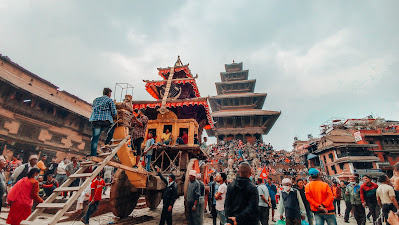You may never have witnessed a gathering as crazy as this one. People's enthusiasm for this event is simply beyond description. Thousands of people travel to Bhaktapur from all over the nation just to witness this festival.
The lyo sin dyo is this Jatra's primary draw. That is spelled similarly to lingo. On the last day of the month, Chaitra, residents erect a towering, unyielding pole. then lay down the following night. The Satruhanta Jatra, which literally translates to "seeing the downfall of your enemy," is the name given to this process of laying the lingo to rest.
It's a widely held belief that anyone who witnesses the lingo falling to the ground will also meet their demise. This occasion occurs on the first day of the Bikram Sambat new year. (BS). However, in addition to Biska Jatra, the day is also favored as
Vaishaka Sankranti, Mesha Sankranti, or Bisket Sankranti.
Of course, by including a chariot festival in this celebration, the Malla kings increased the significance of Biska jatra. During the celebration, crowds gather and collide with the chariots of Bhairava and Bhadra Kali.
The tug of war that results from individuals pulling an unequal number of ropes is therefore skewed in favor of moving forward.
The relative difficulty of the terrain in the two tug-of-war ways is partially offset by this.
It is believed that the chariot's appearance signifies the god Bhairava's Darsana to that portion of the city. The men from the lower part of the city attempt to drag the chariot from Taumadhi Square into the Bazaar Street and along it to the south and then west as far as the Tekhaco twa.
As far as Dattatreya plaza, the residents of the upper city attempt to drag it out of the plaza along Bazaar Street to the north and east. Additionally, the most hazardous aspect of this event is the tug of war, making it one of the riskiest events in the world.


No comments:
Post a Comment